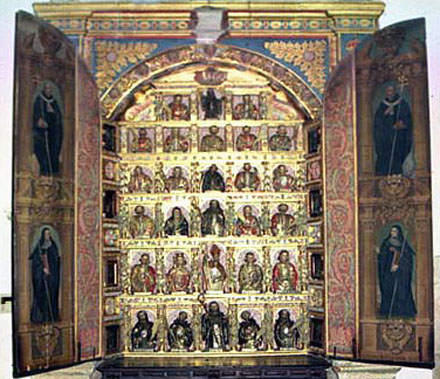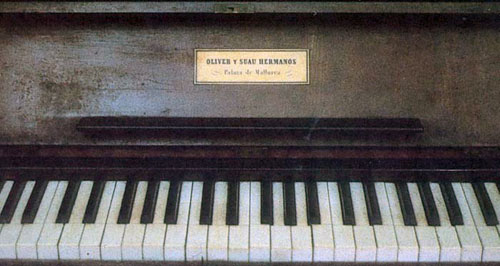
I am sorry. I got it all wrong.
In my blog entry dated July 18th, Better Late Than Never, I was under the wrong impression that the Catholic church would beatify 498 Spanish martyrs as a late but somehow inevitable gesture to make amends about their role during the years of the Spanish Civil War. I even thought that the announced beatification was meant as a way of saying ‘Sorry’, albeit a bit late. But, as I suggested, it would be better late than never.
Well, last Sunday was the big day in Rome. 40,000 Spaniards apparently attended the largest mass beatification that the Catholic church has ever celebrated. But, it was all wrong, from my point of view, and from the point of a balanced historical assessment.
Amongst the 498 martyrs beatified and postumously honoured, it seems that there was not a single name that can be attributed to the Spanish Republican cause. All of the dead martyrs were Catholic priests and nuns, and all of them had died standing up for, and siding with, General Francisco Franco and the totalitarian regime that the Generalissimo stood for.
Critics other then me accuse the Vatican of playing politics by promoting recognition of one side of the Civil War’s protagonists.
Spain remains deeply polarized, even today, as it struggles to come to terms with its past.
Spain is currently governed by the PSOE party of the Socialists, under José Luis Rodríguez Zapatero. His government is in the process of passing a bill later this week, called Ley de la Memoria Histórica, under which Spain would try to come to terms with the atrocities of the Franco regime. Spain’s Catholic church on the whole sided with the Fascists led by Francisco Franco, who overthrew the elected leftist government, eventually won the war and ruled as a dictator for nearly four decades, granting wide power and influence to the church.
The Catholic church in Spain has a history of doing dark and wicked deeds, and getting away with it. Let’s just look at another chapter of Spain’s history, a possibly even darker one than the Civil War. Yes, I am talking about the time of the Spanish Inquisition.
In 1478, Queen Isabel established the Spanish Inquisition under the leadership of the Dominican monk Tomás de Torquemada. The Inquisition was initially founded to ensure the sincerity of former Jews and Muslims who had recently converted to Christianity, known as Conversos and Moriscos respectively. Insincere converts were suspected of disloyalty and punished.
As an institution that operated in both Castile and Aragón, the Inquisition was an instrument for unity in Spain. It brought both monarchies closer to the Roman Catholic church and it helped guarantee that Spain would remain a profoundly Catholic country.
In its first decades, the Inquisition tried and punished thousands of people, including many Conversos involved in commerce and trade. However, it soon turned into a general witch-hunt. The Inquisition turned on any and all royal subjects. People judged to be heretics were executed, often by burning at the stake.
In 1492, all unconverted Jews were ordered to leave Spain, and as many as 100,000 emigrated to Portugal, North Africa, the Ottoman Empire, and other parts of Europe. In the early 17th century the Spanish inquisitors turned their attention to Muslims. Between 1609 and 1614, more than 250,000 Spanish Muslims were driven out of Spain. Later, the Spanish Inquisition sought to discipline citizens suspected of practicing Protestantism.
At the time, many Spaniards considered the Inquisition a triumph for Roman Catholicism. The church, with Royal cooperation, also censored books, and students were prohibited from studying abroad to prevent the importation of Protestant ideas into Spain. These practices eventually cut Spain off from intellectual developments in Europe and turned Spanish universities into academic backwaters. This isolation made it more difficult for Spain to modernize in later centuries. In addition, the urge to protect royal legitimacy, power, and prestige, led Spain to fight wars it could not win, at great cost to Spain’s society and economy.
For the Reyes Católicos (Catholic Monarchs) – a title given to Fernando and Isabel by Pope Alexander VI for their religious devotion – religious observation was central to achieving domestic peace. The Spanish monarchs, like their European counterparts, were believed to rule as trustees of God. This direct link to divine authority is what made rulers legitimate in Europe. It also made non-Christians or heretics dangerous because their rejection of Christianity implied that they did not accept the monarch’s right to rule.
Spain, in my view, is to this day a rather conservative country. The country is polarized, not unlike it was in the Thirties, between those, who think that Franco was not a bad man after all, and those who would prefer to live in the present world rather than in the Past. The old divide continues to exist, between those on the Left and those on the Right.
The previous Spanish government was ousted three days after the deadly Madrid train bombing of 2004, which many people understood to be a consequence to the government of José María Aznar’s decision to go to war in Iraq with the Big Boys, against the expressed wishes of large parts of the Spanish population.
The Church in Spain now wants to gain some of the influence back that it had in the old days. The Vatican’s ceremony two days ago was not an attempt to come clean and to offer an apology, but an attempt to turn the clocks back to a Spain that is conservative, that is non-democratic and that is xenophobic.
I would not be surprised if the Church somehow, secretly, would want to resurrect the days of the Spanish Inquisition.
May God save us all from his or her Catholic disciples.



















You must be logged in to post a comment.